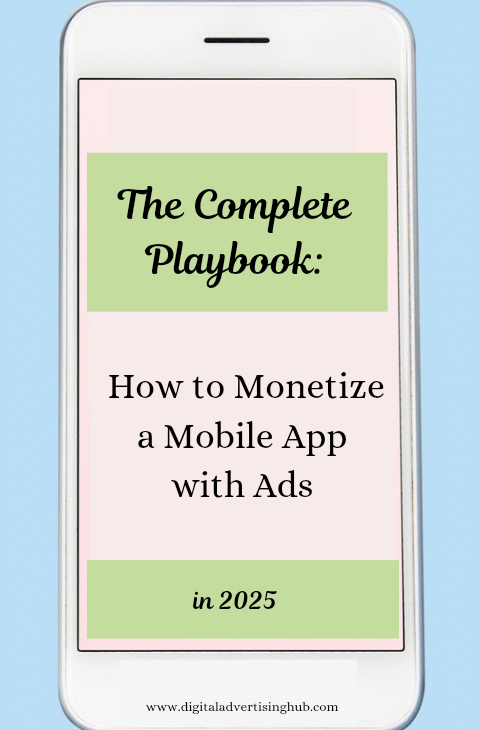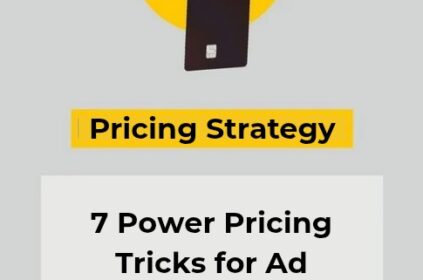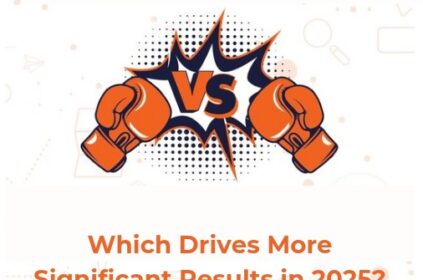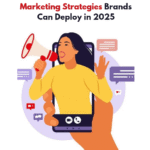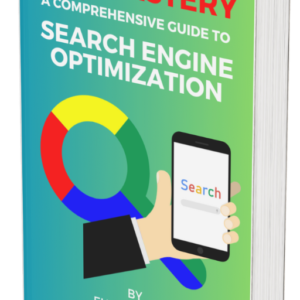Mobile advertising keeps expanding even as in-app purchases plateau. Statista projects total ad spend will reach roughly $798 billion in 2025, with mobile drawing the lion’s share.
That surge explains why founders everywhere aim to monetize a mobile app with ads: the model scales, keeps price-sensitive users onboard, and generates recurring revenue without paywalls.
Yet success is no longer as simple as dropping a banner into every screen. Privacy frameworks, rising user expectations, and fierce network competition demand a disciplined approach.
So, follow along, and learn how to monetize a mobile app with ads under 2025 rules—from picking the right demand partners to negotiating faster payouts.
The 2025 Ad-Monetization Landscape
Global mobile ad spend grew at double-digit rates even after Apple’s App Tracking Transparency (ATT) rocked attribution.
AppsFlyer reports iOS ad spend rose 26 percent between 2023 and 2024, a sign that advertisers have already adapted.
Meanwhile Sensor Tower’s Digital Market Index shows U.S. in-app ad revenue hit $31 billion in Q1 2025 alone.
These trends confirm that founders who monetize a mobile app with ads can still scale, provided they respect privacy prompts and optimize inventory in real time.
Cost-per-mile (CPM) rates vary widely. Rewarded video often outperforms other formats; Udonis pegs recent U.S. iOS eCPMs at roughly $13.81.
Interstitials trail but offer broader reach, while native and banner placements supply steady but modest returns.
Under the hood, ad mediation stacks now auction each impression across multiple networks, pushing up clearing prices and smoothing fill rates.
For anyone planning to monetize a mobile app with ads today, mastering mediation is no longer optional; it is where incremental dollars are hiding.
Key Ad Formats That Drive Revenue in 2025
Rewarded video dominates gaming and increasingly lifestyle apps because it marries user choice with high engagement; completion rates routinely exceed 90 percent.
Interstitials, when capped at natural pause points, work in utility and productivity titles. Native ads excel in content feeds and short-form video reels, blending seamlessly without killing retention.
Finally, app-open units monetize launch screens that once earned nothing. Each format pays differently—interstitial eCPMs can range from $4 to $6 across many networks, while rewarded video peaks as high as $50 in top-tier geos.
Mapping these payouts against session length and churn risk lets you monetize a mobile app with ads without gutting UX.
Choosing Monetization Models & Platforms
Before integrating SDKs, outline your revenue mix. Next, shortlist trusted networks. Google AdMob remains the default for scale; ironSource, AppLovin MAX, and Unity LevelPlay dominate mediation.
MoPub’s migration to AppLovin consolidated demand; AppsFlyer’s SKAN analytics closed the loop on iOS.
Platform selection influences how much ads pay because each network negotiates unique direct-buy deals.
Business-of-Apps data shows rewarded CPMs vary by 40 percent across networks in the same geo, so multi-network bidding matters.
A well-configured stack can help you monetize a mobile app with ads more effectively than any single partner.
App Monetization Requirements in 2025
Compliance sits beside revenue in every RFP. The latest ATT prompt guidelines stress pre-prompt education and are increasingly enforced.
Purchasely notes opt-in rates dip below 41 percent when timing is off. Google’s Privacy Sandbox for Android introduces Topics and FLEDGE APIs that limit data sharing but enable contextual targeting.
COPPA or GDPR-K applies if minors access content. Meeting these rules early prevents rejection during app-store review and guarantees ad-network approval letters.
Build user-level consent flows first, then layer monetization. That groundwork means you can monetize a mobile app with ads globally rather than battling piecemeal roll-outs country by country.
Implementing User-Friendly Ad Experiences
Monetization fails when ads annoy the very audience the app relies on. The most profitable developers throttle frequency, batch network calls to reduce latency, and position units at emotionally neutral pauses—often after level completion or when a user requests a bonus feature.
Doing so addresses the question of how ads pay on mobile apps. Ads pay when viewability, completion, and click-through rates stay high, and those metrics correlate strongly with smart placement.
Apps that monetize a mobile app with ads effectively also respect load-time budgets. Any asset exceeding 1 MB should pre-cache over Wi-Fi or 5G to avoid start-time stutters.
In parallel, many teams adopt server-side A/B tools—Firebase Remote Config or Optimizely—to toggle formats without new builds.
That flexibility supports both global roll-outs and local experiments, maximizing each cohort’s revenue potential.
How to Monetize Without Hurting UX
Balance is mathematical: measure revenue per daily active user (ARPDAU) against day-7 retention. If ARPDAU rises 15 percent but retention drops 8 percent, long-run lifetime value shrinks.
Leaders therefore place rewarded video first, interstitials second, banners last. They offer ad-free upgrades or subscription tiers for power users.
This tiered approach not only helps you monetize a mobile app with ads but also answers app monetization requirements by separating consent, choice, and delivery.
As a bonus, ATT opt-in rates improve when users see tangible value before privacy prompts.
Data-Driven Optimization & Testing
Revenue spikes seldom last without iteration. Sophisticated teams run continuous waterfall tests that swap networks every week, watching eCPM, fill, and latency.
They also use predictive models to forecast LTV per acquisition source, adjusting user-acquisition bids to account for ad revenue.
Sensor Tower’s Q1 2025 data shows apps bringing ad revenue into UA models lifted ROI by 17 percent quarter-over-quarter.
If you aim to monetize a mobile app with ads sustainably, feed impression-level revenue (ILR) into AppsFlyer, Adjust, or Singular for precise cohort analysis.
Payment Workflows and eCPM Boosts
“How do I get paid for ads on my app?”
Networks typically pay on a 30- or 60-day net basis once earnings exceed a $100 threshold, transferring funds via ACH or wire in the developer’s local currency.
Faster liquidity arrives through revenue-based financing partners such as Pollen VC or Lighter Capital, who advance up to 70 percent of projected income against historic earnings.
They review dashboards rather than credit scores, making it simpler to monetize a mobile app with ads and reinvest proceeds into UA before holidays.
For pure DIY, negotiate shorter cycles—some mediation layers now support weekly payouts when monthly revenue tops $20k.
Ad Revenue and User Acquisition Feedback Cycles
Healthy apps rarely treat advertising income as end-of-month gravy; they pipe it straight back into user-acquisition bids and product polish.
Picture a scenario where a lifestyle title nets $0.27 ARPDAU and spends $0.20 of that on look-alike campaigns—profit still flows, yet the audience widens each day.
Doing the math against industry benchmarks brings the idea to life: Sensor Tower’s Q1 2025 Digital Market Index pegs U.S. mobile ad spend at $31 billion on 3.9 trillion impressions, underscoring how deep the demand pool runs.
When founders monetize a mobile app with ads and then recycle a set percentage of daily earnings into paid growth, CAC stays pegged to revenue performance instead of unpredictable venture infusions.
The cycle works because impression-level revenue (ILR) data lets UA managers raise bids on cohorts whose ad engagement already proves profitability, trimming bids on weaker segments before budget burns.
Over time, that reinforcement compounds retention and eCPM gains: more engaged users generate higher ad yield, which funds fresh inventory, creating a self-sustaining engine.
The takeaway is straightforward—treat advertising dollars as a variable-rate fuel line rather than quarterly dividends and the model scales without external cash shocks.
Seasonal Variations in eCPM and ARPDAU
Revenue volatility often tracks the calendar more than creative strategy. MonetizeMore’s 2024 study shows U.S. app-open ad eCPMs swinging from $7.75 in July to $10.51 in March, a 36 percent jump in just eight months.
Developers who monetize a mobile app with ads must therefore forecast seasonality the same way retailers plan Black Friday inventory.
Start by charting the past two years of eCPM, fill rate, and retention; overlay public holidays, regional payday cycles, and sports seasons that spike attention.
The insight is simple but powerful: an interstitial that earns $0.004 per view in April may top $0.006 in December, yet serves to an audience 14 percent less engaged because users are busier.
Smart teams pre-cache high-impact formats before Q4, throttle banner frequency in low-yield months, and shift budget toward rewarded placements when CPM dips.
By aligning format mix to historical peaks, you maintain stable ARPDAU even when market demand softens.
Transparent seasonality charts also keep finance managers calm—unexpected troughs become predictable valleys instead of panic triggers.
Ultimately, understanding calendar-driven variance protects cash flow and ensures the decision to monetize a mobile app with ads delivers predictable outcomes across the fiscal year.
Mediation Stack Design for Consistent Fill Rates
A single-network integration once felt adequate; in 2025 it is a revenue bottleneck. Rewarded video eCPMs on iOS average $13.81 in the United States yet drop below $2.60 in Latin America, according to Udonis’ global benchmark.
To capture that spread, leading studios plug at least four competing networks into a mediation layer and let real-time bidding decide the winner.
The design principle mirrors high-availability engineering: redundancy, graceful degradation, and transparent logging.
When you monetize a mobile app with ads through mediation, an outage at one SDK merely lowers competition for a few auctions rather than wiping fill entirely.
Implementation begins with rank-ordering networks by historical eCPM in each geo, then setting floors that maintain UX while encouraging bids.
Waterfall tests rotate positions weekly to discover hidden demand, while A/B splits isolate latency impact on first-paint metrics.
Beyond revenue resilience, mediation data reveals geographic white space; if a regional network wins 60 percent of auctions in Brazil but less than 5 percent in Canada, UA spend can mirror those profitability clusters.
The payoff is two-fold: an always-on revenue pipe that survives SDK hiccups and a granular map of where to hunt new users profitably.
Lifetime Value Modeling for Ad-Supported Apps
Classic LTV formulas skew low when most income flows from impressions rather than purchases. Ads generate value on every session, so LTV must aggregate ARPDAU across projected retention curves.
AppsFlyer’s retention guide shows the average app’s user base falls from 21 percent on day-1 to 7.5 percent by day-10; multiply those survival rates by daily ad yield and you get a rolling revenue forecast per install.
Developers who monetize a mobile app with ads plug that dynamic LTV into UA dashboards, creating acquisition bids that remain profitable even if IAP spend is negligible.
The nuance is critical: channels with cheaper CPI but shorter stickiness can beat premium networks once ad revenue is factored in, flipping traditional assumptions.
Equally, an influencer campaign with high-engagement, low-churn users may justify a higher bounty because each extra session multiplies impressions.
Feeding ILR data into cohort reports turns LTV from a static guess into a living number refreshed every midnight ETL.
When finance teams see ad-based payback periods hit 25 days instead of 60, budgets unlock on command.
In sum, accurate LTV accounting closes the feedback loop that makes it truly sustainable to monetize a mobile app with ads at scale.
Compliance, Privacy & Future-Proofing
Regulation turns quickly. Apple may tighten ATT exemptions; Google’s Privacy Sandbox is rolling out Topics API experiments; and the EU Digital Services Act mandates clear labeling of commercial content.
Apps that ignore these shifts risk delisting or fines, eroding all the effort spent to monetize a mobile app with ads.
Start by partitioning consent strings in local storage, respect IAB TCF on Android, and retain SKAN postbacks for at least 60 days.
Additionally, build server-side tagging to migrate away from device IDs well before they disappear.
Video will claim 85 percent of consumer internet traffic by 2025, so begin compressing creative with HEVC and AV1 to keep load times down.
At the same time, contextual targeting engines—capturing on-screen keywords and scroll velocity—will replace fingerprinting.
Address-able yet privacy-safe data ensures you continue to monetize a mobile app with ads even if device IDs vanish for good.
Swift Paths for New Apps to Monetize Fast
Now, let’s talk about which app monetizes fast.
Titles that launch with deep session loops, early rewarded moments, and mediation in place often hit positive cash flow within a month.
Small teams prototype with Google AdMob then layer ironSource for reward and AppLovin for interstitial demand.
They attach AppsFlyer SKAN measurement to understand ROI on iOS from day one. Such discipline means they can monetize a mobile app with ads instantly, answer investor pressure, and still pivot UX before scale amplifies mistakes.
Conclusion
Advertising remains the most flexible way to monetize a mobile app with ads, because it scales with engagement rather than gating your product behind paywalls.
Start by mapping global demand: rewarded video, interstitial, native, and app-open units each have a place.
Select mediation platforms that drive competition, respect privacy frameworks, and plug ILR data into attribution dashboards.
Tune placement frequency until ARPDAU and retention both climb, proving you can monetize a mobile app with ads without sacrificing loyalty.
Next, build finance-friendly workflows—weekly or bi-weekly payouts, revenue-based advances where necessary, and clear audit trails.
These systems answer not only how much do ads pay on mobile apps but also how do I get paid in practice.
Finally, future-proof operations by following ATT guidance, preparing for Google’s Sandbox, and compressing creative for the video-first era.
With those safeguards in place, you will monetize a mobile app with ads today and keep earning tomorrow, even as platforms, privacy laws, and user expectations evolve.
The discipline outlined above transforms advertising from a bolt-on afterthought into a predictable growth engine—putting your app on the path to durable, compounding revenue.

